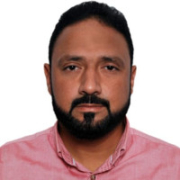

VMware vSphere and Nutanix AHV compete in the virtualization solutions category. Nutanix AHV appears to have the upper hand due to its better pricing model and user-friendly integration with hyper-converged infrastructure.
Features: VMware vSphere provides high availability, DRS, and an extensive virtualization feature set supported by a robust ecosystem. Nutanix AHV offers seamless integration with hyper-converged infrastructure, strong data protection, and convenient one-click upgrades.
Room for Improvement: VMware vSphere needs better licensing models, competitive pricing, and improved cloud and container integration. The web-based management interface requires enhancements. Nutanix AHV should expand third-party support and offer features comparable to VMware's breadth.
Ease of Deployment and Customer Service: Both VMware and Nutanix provide strong on-premises deployment. Nutanix offers rapid deployment and an easy-to-use Prism interface, while VMware's customer service can be inconsistent. Nutanix's customer support is generally responsive.
Pricing and ROI: VMware vSphere is often more expensive with a complex licensing model, potentially challenging for small businesses. Nutanix AHV is cost-effective due to its integrated solutions and straightforward licensing. Users report better ROI with Nutanix, despite a higher initial investment in hardware.
We find a 100% return on investment with Nutanix AHV Virtualization, so there's no question about it.
We can say 10% is the approximate amount of savings because most of the things are automated and streamlined, so the manual work is eliminated in most cases.
Their engineers are excellent and provide great supportability.
They provide prompt and quality responses.
We are getting the correct support personnel, who help us sort out our issues, so the support is very nice.
Priority one issues are usually addressed by engineers within one to two hours.
Recently, support has been less friendly and slower, especially after the company was acquired by Broadcom.
If we have issues, the support tends to be unreliable
We can scale our systems easily without any downtime, making it a highly effective solution for dynamic environments.
Nutanix AHV Virtualization is very scalable; however, I might be underutilizing its capabilities.
Nutanix AHV Virtualization is very much scalable, and we can scale up to 32 nodes easily, which is a huge size.
Scaling is easy, whether it is hyperconverged or a three-tier architecture.
VMware vSphere is highly scalable in terms of the number of users and the number of servers it can handle.
It is a highly scalable solution.
The solution is very stable.
Issues such as patch delays and the OVF format challenge affect its stability rating.
Upgrades and updates occur without any downtime, so it is 100% stable.
It is a very stable hypervisor solution.
While they are generally stable, if outages occur, they tend to be due to brands like HP or Dell, not VMware vSphere itself.
Mostly we don't have issues, but sometimes we have faced some stability issues because of some bugs and some CPU compatibility issues with Intel CPUs.
This delay in patching creates risk, especially for government projects that require timely updates.
These menus often show options like host, memory, and disk, however, they fail to provide insight into what's happening.
Using Lenovo hardware seems problematic with Nutanix AHV Virtualization, which demands careful consideration during updates.
The cost changed from perpetual to subscription, and there is a need for alternative solutions.
Another area is the stability during upgrades from older versions to newer versions, where we face issues.
Sometimes, it is difficult to find documentation for specific tools and solutions.
This has been advantageous as it does not require additional licensing costs for the hypervisor, contributing to overall cost savings.
Other solutions like Citrix and VMware have seen a significant price increase, whereas Nutanix hasn't increased as dramatically.
The pricing was reasonable compared to other competitors, though the storage was expensive.
Many customers are trying to avoid it due to its high cost.
Costs significantly increased from perpetual to subscription, with prices rising by two to three times over three to five years.
The solution is too expensive.
It is easier to manage than VMware in some ways, providing a good level of interaction.
Using Nutanix AHV Virtualization in a single management pane is very important to me, as it allows us to see everything related to our hardware, software, servers, and VMs from one console.
The technology behind the backups is very efficient, enabling a reliable virtual environment.
The vMotion feature is beneficial for online migration of virtual machines from one host to another without downtime.
The tool is highly available, which is crucial for implementing critical applications requiring 24/7 availability.
I always use VMware vSphere vMotion; we work with this feature all the time. vMotion is very useful; that's why we use the virtualization.
| Product | Market Share (%) |
|---|---|
| VMware vSphere | 16.8% |
| Nutanix AHV Virtualization | 7.6% |
| Other | 75.6% |


| Company Size | Count |
|---|---|
| Small Business | 20 |
| Midsize Enterprise | 15 |
| Large Enterprise | 23 |
| Company Size | Count |
|---|---|
| Small Business | 174 |
| Midsize Enterprise | 137 |
| Large Enterprise | 256 |
VMware vSphere is a versatile virtualization platform known for its ease of use, flexibility, and high availability. It supports seamless migration, optimal resource allocation, and centralized management, making it highly suitable for diverse infrastructure needs.
VMware vSphere is widely adopted for its virtualization capabilities that enhance hardware efficiency and ensure minimal downtime through features like High Availability and Distributed Resource Scheduler. Despite criticisms about high licensing costs and limited fault tolerance, it remains a preferred choice due to its stability, scalability, and robust integration options. Users appreciate its efficiency in managing virtual machines and hosting enterprise applications, although challenges with web client performance and hardware compatibility are noted. Organizations often look for better integration with cloud services and enhanced automation and scalability.
What are the core features of VMware vSphere?
What benefits and ROI can businesses look for?
VMware vSphere is implemented across sectors like healthcare, finance, and education for server virtualization, data center management, and private cloud creation. Its use in facilitating business-critical operations ensures high availability and efficient resource use, supporting both development and production environments.
We monitor all Server Virtualization Software reviews to prevent fraudulent reviews and keep review quality high. We do not post reviews by company employees or direct competitors. We validate each review for authenticity via cross-reference with LinkedIn, and personal follow-up with the reviewer when necessary.